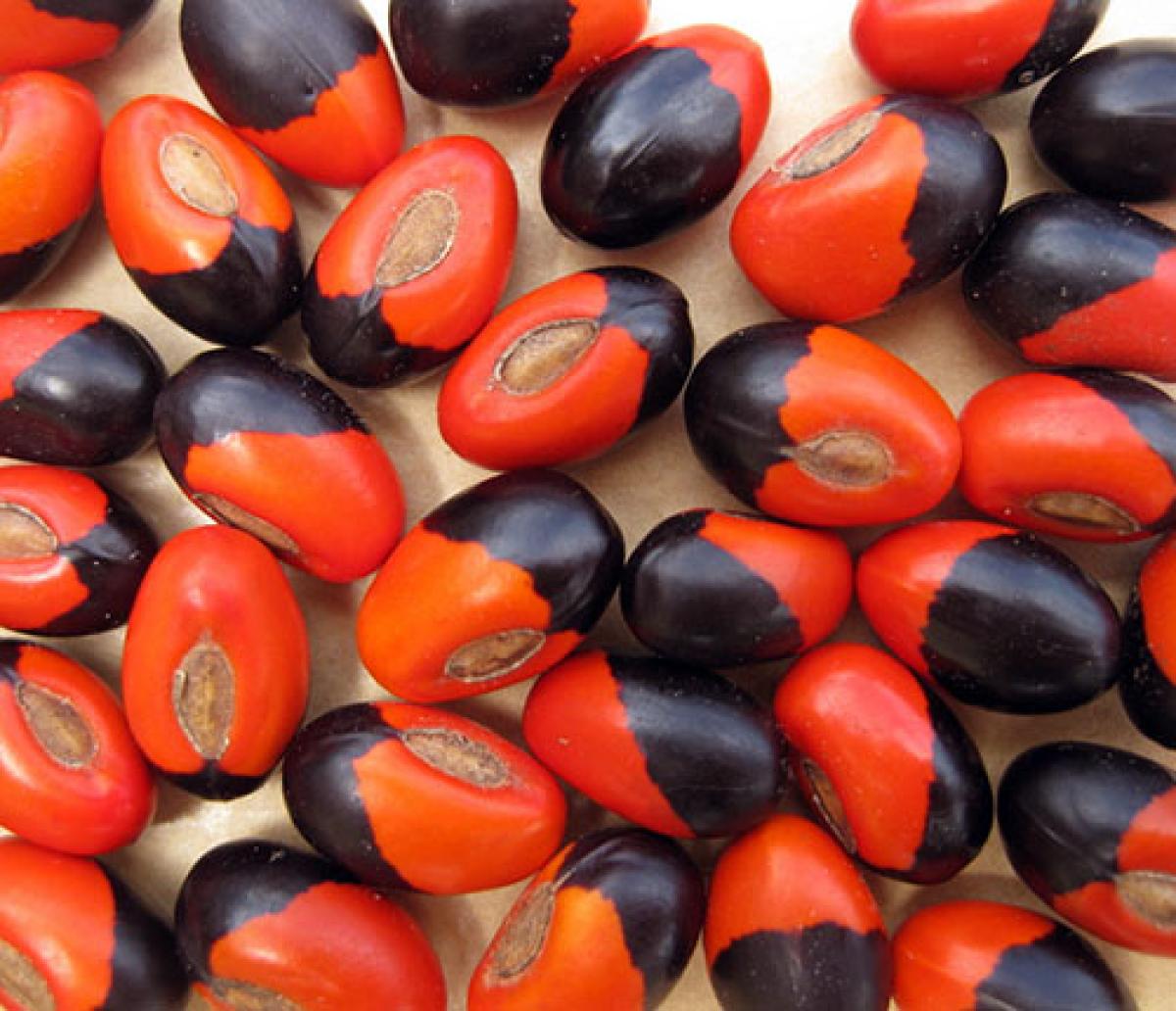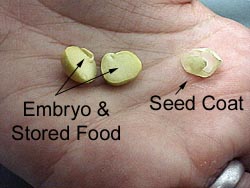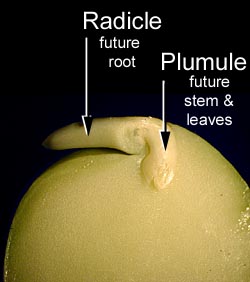Seed Anatomy
Seeing Seeds Close-up - These pictures are of a pea seed
| Here you can see, I've removed the seed coat and split the seed in half. One half has the embryo and some of the stored food, and the other half holds the rest of the stored food. |
|
|
This picture is of the half of the seed that has the embryo. |
|
| This picture is a close-up of the embryo. You can see the part of the embryo called the radicle, which will grow and develop into the roots. You can also see the part called the plumule (PLOOM-ule), which will grow and develop into the stems and leaves. |
|
Make your own seed germination viewer.
Read more about: Time Traveling Plants
Bibliographic details:
- Article: Seed Anatomy
- Author(s): Dr. Biology
- Publisher: Arizona State University School of Life Sciences Ask A Biologist
- Site name: ASU - Ask A Biologist
- Date published: 7 Oct, 2009
- Date accessed:
- Link: https://askabiologist.asu.edu/content/seeds
APA Style
Dr. Biology. (Wed, 10/07/2009 - 19:36). Seed Anatomy. ASU - Ask A Biologist. Retrieved from https://askabiologist.asu.edu/content/seeds
Chicago Manual of Style
Dr. Biology. "Seed Anatomy". ASU - Ask A Biologist. 07 Oct 2009. https://askabiologist.asu.edu/content/seeds
Dr. Biology. "Seed Anatomy". ASU - Ask A Biologist. 07 Oct 2009. ASU - Ask A Biologist, Web. https://askabiologist.asu.edu/content/seeds
MLA 2017 Style

These seeds are in the Fabaceae family and are found only in Madagascar. Can you think of a reason for the bright colored shells?
Be Part of
Ask A Biologist
By volunteering, or simply sending us feedback on the site. Scientists, teachers, writers, illustrators, and translators are all important to the program. If you are interested in helping with the website we have a Volunteers page to get the process started.



.jpg)
